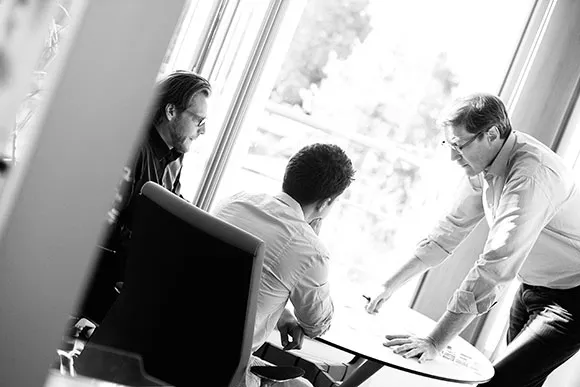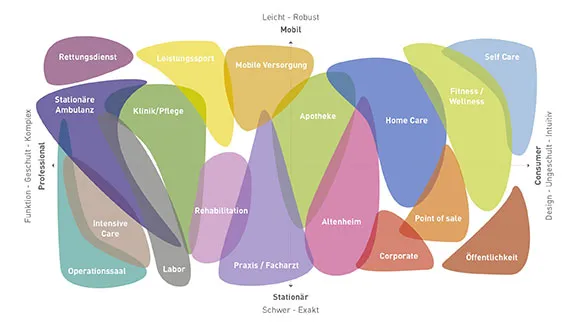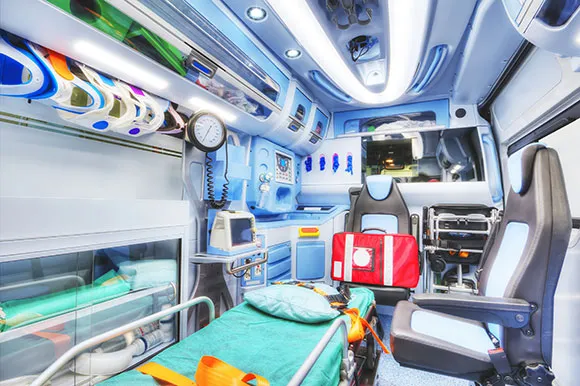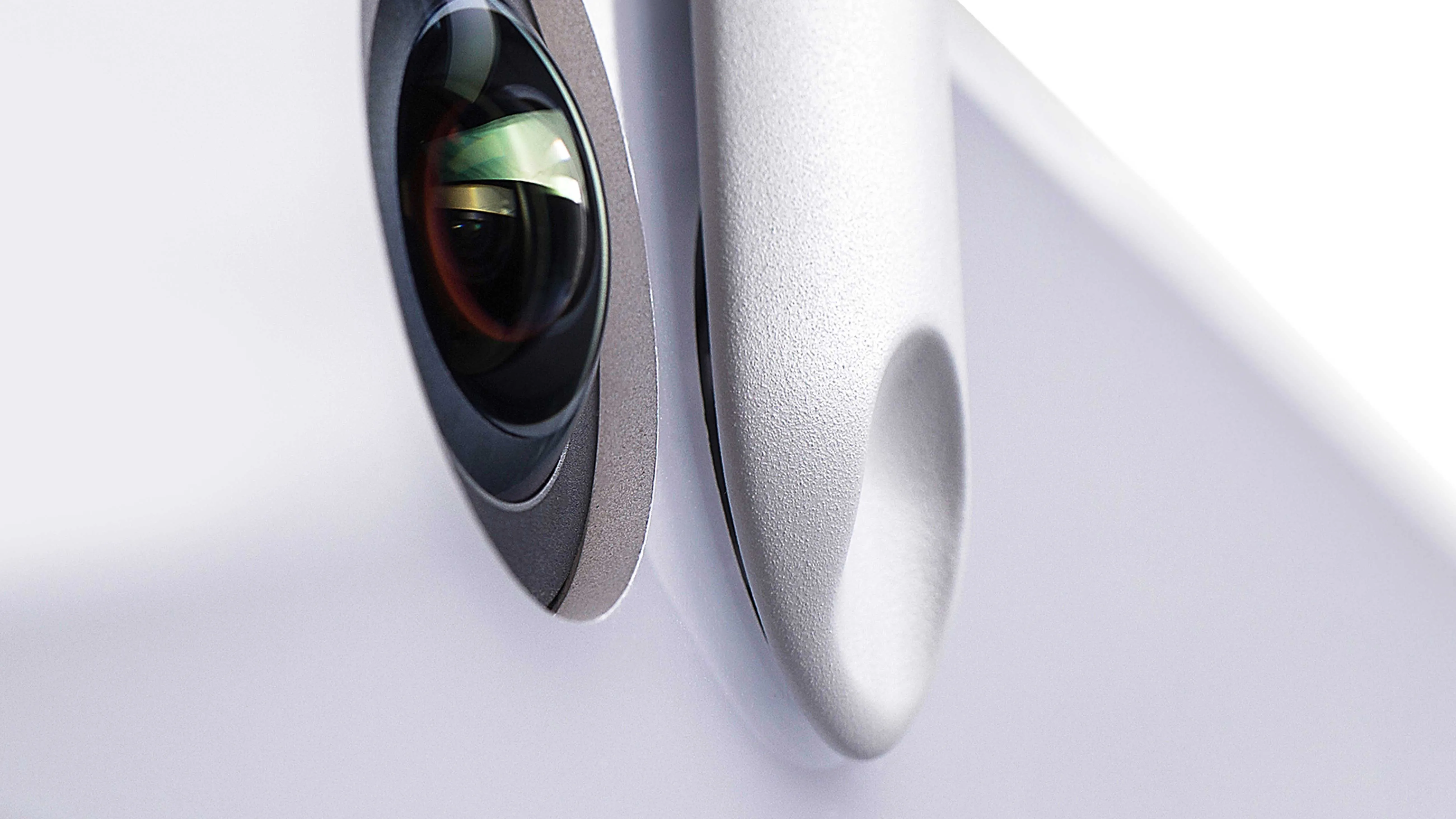Keynote
Medical Design Trend Update
Here is our MEDICAL DESIGN TREND UPDATE! 15 trends that we believe will point the way forward in medical design in the coming years are presented in detail. Extensive research and numerous discussions with experts from a wide range of disciplines in the medical technology sector, which we held at MEDICA last year and elsewhere, provided the basis for this. We show examples of current innovations, but also visions, and let experts have their say in interviews.

What can you expect in our Medical Design Trend Update?
Ask the USER! With this general demand for more user involvement in mind, we invite you on an exploratory tour to understand the current opportunities and challenges for real innovation in medical technology and to describe the trends that hold great potential for better medical devices. While most players in medical technology are forced to deal with the rapidly increasing regulatory requirements - such as the new European Medical Device Regulation (MDR) or other current standards - we draw attention to the topic of medical design trends. Two years ago, we published our first trend report , which we have now thoroughly updated.

15 trends = 15 design challenges
A lot has been set in motion in the past year: Energy, mobility and digitalization are general topics that have now entered the public consciousness and are the subject of controversial debate. Our future depends on making the right decisions at a personal, national and global level.
The frontal political and social attack on the truth, for which the word "post-factual" was created in 2016 and named word of the year, creates space for probabilities and the associated uncertainty. Authorities are shaking and authorities are eroding. Aside from acute care, medicine is increasingly penetrating the private sphere and people are gradually reclaiming control over their own health, supported by Google and the like.
Objectively speaking, we are doing better and better
While the subjective perception of health in industrialized countries is deteriorating at patient level, mortality, for example, continues to fall on a global scale. Medical and technical progress are objectively on the road to success, but we humans do not feel healthier.
In his latest book "Homo Deus", Yuval Noah Harari writes: "In the 21st century, people will probably seriously reach for immortality." Google Ventures boss Bill Maris already assumed in 2015 that it is possible to live to be 500 years old and is now investing several hundred million dollars in start-ups in the life sciences.
Lots of opportunities, but how can you make the most of them?
In these interesting times, with huge opportunities for innovation for those who see and courageously seize the possibilities for change, we would like to offer our discipline of Medical Design with this trend update. The individual 15 trends that we present here in detail are current trends that can be observed in modern product developments and should therefore also be taken into account. But before we get into the practical part, to learn how we can incorporate current trends into our development context, let's start with an overview:
We see three key factors influencing our current and future work as product developers in medical technology: USER, DESIGN and TECHNOLOGY

USER
First and foremost, we see the USER, who is now increasingly becoming the focus of medical product development. Supported by the substantial standards for creating better usability, such as the IEC 62366the USER has become a factor that can no longer be neglected. Usability is becoming a driving force for product innovation alongside technological progress. In future, new medical products will have to adapt to completely different contexts in order to be used in public spaces or in a shopping mall, for example.
Point-of-care is the associated trend that makes the achievements of modern medical technology available wherever the user needs them. As part of the point-of-care trend, we see mHealth continuing to gain ground, i.e. the increased mobilization of products through to permanent wearing on the body. The issue of hygiene is becoming increasingly important due to the problems with multi-resistant germs and the weakening of the concept of antibiotics, and is having an impact on product design. The overall aim is to make treatment more and more of a positive experience so that we as patients can feel completely at ease in the Positive Clinical Experience.

DESIGN
We see a whole series of stylistic drivers penetrating from the design sector into medical technology. Due to the increasing privatization of medical applications through to pure homecare products, consumer familiarity is becoming very important. Users and customers are looking for what they know - in particular a touchscreen with smart operation that they are familiar with from their cell phone. The product is designed to be as simple as possible so that they are not overwhelmed by the operation.
Minimalism and simplicity are an expression of this strong design trend. Color also serves as a leitmotif for the trendy development of medical products, whether in elegant Black & White Contrast or in the selective use of strong colors in the color splashes trend. The transition to technological innovation is marked by the connectivity megatrend, which is also firing the imagination in medical technology. A number of reservations and even more regulatory hurdles still stand in the way of connecting and bundling data streams, but connectivity is already having a style-defining effect on design.
TECHNOLOGY
Although the technological progress that has set the tone to date continues to form the basis for new product generations, the "higher, faster, further" of technical development is increasingly blunting the user's awareness. In our view, the most important technological influences on product innovation are automation and miniaturization. Service robots and support systems will change the clinical and nursing landscape. To be accepted by healthcare professionals and patients alike, ways must also be found in the design to give these new creatures the right identity. The progressive miniaturization of technical components is pushing innovation towards barely noticeable technology and interventions.
Telemedicine is certainly a long-runner in the trend landscape. eHealth is not new, but the problems associated with it are now being solved step by step, so that this too can be expected to have an impact on medical design. medical design can also be expected here. Advances in the optical visualization of medical events, whether through particularly high resolution or virtual reality, are being captured in the 3D & 4K visualization trend. Last but not least, the rapid advances in 3D printing not only provide us with effective development tools, but also with superior possibilities for series production in small batches down to a quantity of 1.
Many thanks to the authors of this issue, Dana Merchel, Claudia Krettler and Albert Ibragimov, for their intensive research and concise presentation of the 15 trends, as well as our interview partners from research and industry, who have once again objectified our view of things and rounded it off with concrete examples.
We look forward to receiving your questions, feedback and suggestions for discussion.
(by e-mail to trendupdate18@wilddesign.de) We will definitely pick up the ball.
Frequently asked questions




